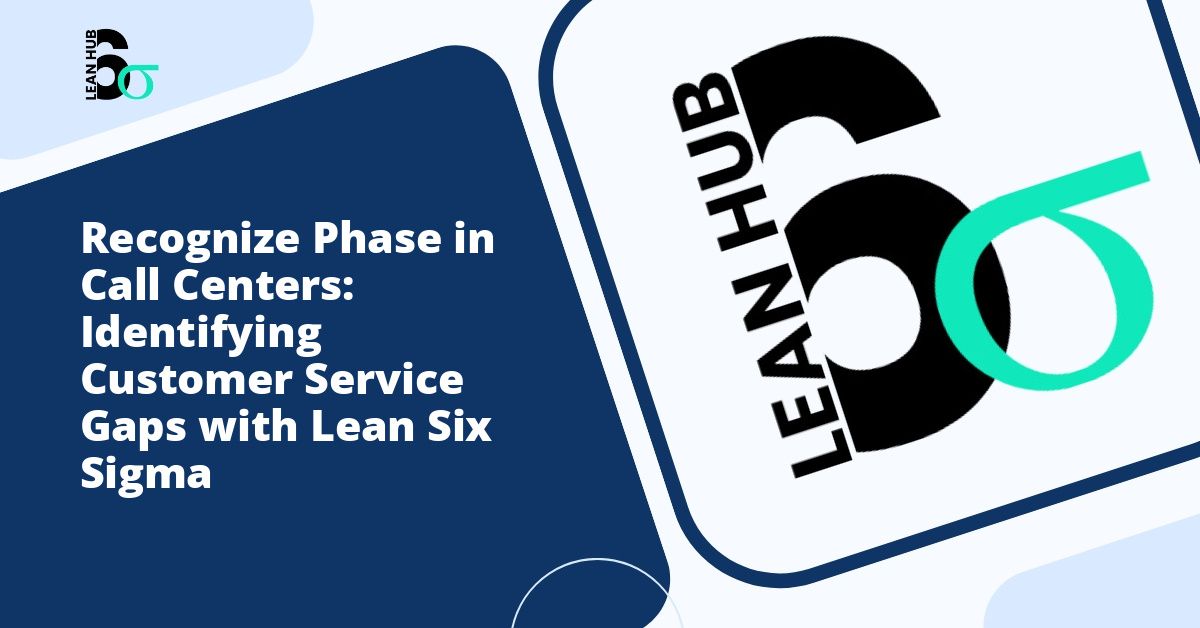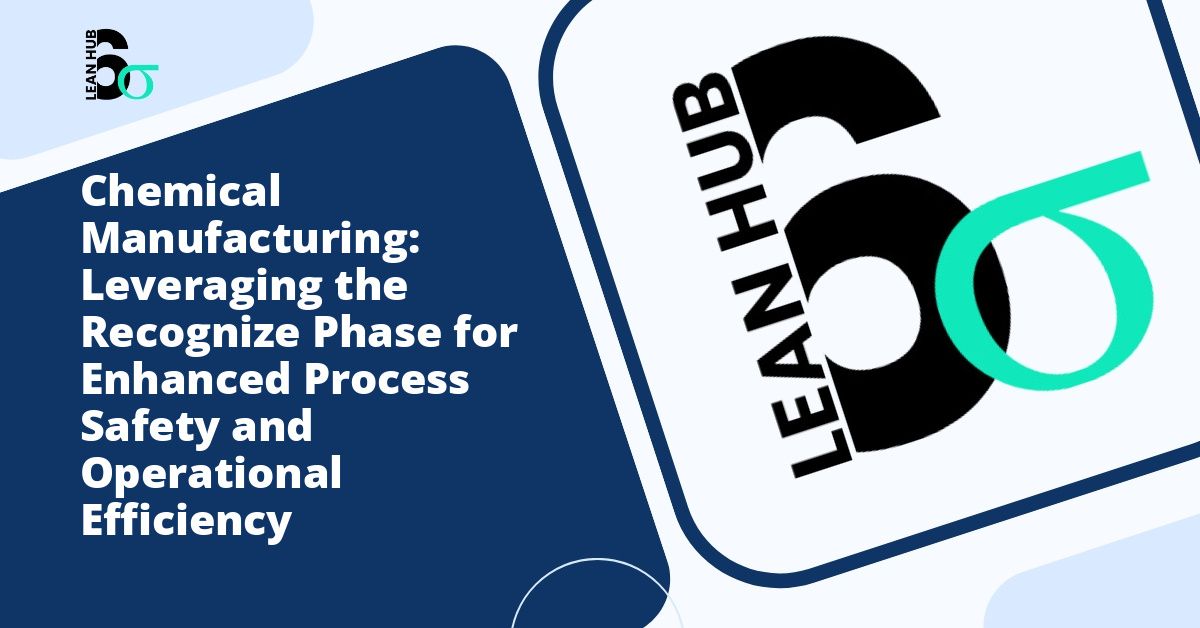In the competitive landscape of customer service, call centers face mounting pressure to deliver exceptional experiences while maintaining operational efficiency. The recognize phase represents a critical first step in identifying and addressing service gaps that can make or break customer relationships. By leveraging proven methodologies like lean six sigma, organizations can systematically uncover issues that hinder performance and customer satisfaction.
Understanding the Recognize Phase in Call Center Operations
The recognize phase serves as the foundation for any improvement initiative within call center environments. This initial stage involves identifying problems, understanding their scope, and acknowledging that gaps exist between current performance and desired outcomes. Without proper recognition of issues, organizations cannot begin the journey toward meaningful improvement. You might also enjoy reading about Problem Recognition in Agile and Six Sigma Integration: A Comprehensive Guide for IT Teams.
In call centers, the recognize phase requires a comprehensive assessment of various operational aspects, from average handle time and first call resolution rates to customer satisfaction scores and agent performance metrics. This phase demands honest evaluation and a willingness to confront uncomfortable truths about service delivery. You might also enjoy reading about How to Get Buy-In for Your Six Sigma Project During the Recognize Phase.
The Role of Lean Six Sigma in Service Gap Recognition
Lean six sigma provides a structured framework for identifying and eliminating defects in any process, including customer service operations. This methodology combines the waste reduction principles of lean management with the statistical rigor of six sigma, creating a powerful toolkit for call center improvement. You might also enjoy reading about Stakeholder Analysis: Who Needs to be Involved in Problem Recognition?.
The recognize phase aligns closely with the Define stage of the DMAIC (Define, Measure, Analyze, Improve, Control) cycle used in lean six sigma projects. During this phase, organizations establish clear problem statements, identify stakeholders, and set boundaries for improvement efforts. This structured approach ensures that recognition leads to actionable insights rather than vague concerns.
Key Benefits of Applying Lean Six Sigma to Call Centers
- Data-driven decision making based on measurable metrics
- Systematic identification of root causes rather than symptoms
- Standardized processes that reduce variation in service quality
- Enhanced customer satisfaction through consistent service delivery
- Improved agent productivity and reduced operational costs
- Sustainable improvements that persist over time
Common Customer Service Gaps in Call Centers
Effective recognition requires understanding what types of gaps typically emerge in call center environments. These service gaps represent the disconnect between customer expectations and actual service delivery.
Knowledge Gaps
Knowledge gaps occur when agents lack the information or expertise needed to resolve customer inquiries efficiently. This gap manifests through extended hold times, multiple transfers, incorrect information, and callbacks to address unresolved issues. During the recognize phase, organizations must assess whether agents have access to adequate training, updated knowledge bases, and support resources.
Communication Gaps
Communication gaps emerge when messages between customers and agents become distorted or unclear. These gaps include language barriers, poor listening skills, inadequate question techniques, and failure to set proper expectations. Recognizing communication gaps requires analyzing call recordings, monitoring customer feedback, and evaluating agent interaction patterns.
Process Gaps
Process gaps represent inefficiencies or obstacles within operational workflows that prevent smooth service delivery. Examples include cumbersome verification procedures, outdated systems requiring multiple logins, insufficient escalation paths, and redundant data entry requirements. The recognize phase must examine end-to-end processes to identify these bottlenecks.
Technology Gaps
Technology gaps occur when systems fail to support agent productivity or customer convenience. Slow response times, system crashes, lack of integration between platforms, and inadequate self-service options all contribute to service degradation. Recognition involves auditing technological infrastructure and identifying modernization opportunities.
Methods for Identifying Service Gaps During the Recognize Phase
Successfully implementing the recognize phase requires multiple data collection and analysis methods. Relying on a single source of information can lead to incomplete understanding and misguided improvement efforts.
Voice of the Customer (VOC) Analysis
Understanding customer perspectives stands at the heart of gap recognition. Organizations should collect and analyze feedback through post-call surveys, social media monitoring, complaint tracking, and direct customer interviews. This qualitative data reveals pain points that quantitative metrics might overlook.
Performance Metrics Review
Quantitative data provides objective evidence of service gaps. Key performance indicators such as average speed of answer, abandonment rates, average handle time, first call resolution, and customer satisfaction scores offer measurable insights into operational health. The recognize phase should establish baseline measurements for all critical metrics.
Process Mapping and Observation
Visual representation of current workflows helps identify redundancies, delays, and complexity that impede service delivery. Process mapping involves documenting each step in customer interactions, from initial contact through resolution. Direct observation of agent activities and shadowing exercises provide additional context that flowcharts alone cannot capture.
Agent Feedback and Engagement
Frontline agents possess invaluable insights into operational challenges and customer concerns. Structured interviews, focus groups, and suggestion programs can uncover issues that management might not observe. During the recognize phase, creating safe channels for agent input encourages honest dialogue about improvement opportunities.
Implementing the Recognize Phase: A Step-by-Step Approach
Successfully executing the recognize phase requires systematic planning and execution. Organizations should follow a structured approach to ensure comprehensive gap identification.
Step 1: Establish Recognition Objectives
Begin by defining what the recognize phase aims to accomplish. Set clear goals such as identifying the top five customer complaints, understanding causes of high call abandonment, or determining factors affecting first call resolution. Specific objectives focus efforts and resources appropriately.
Step 2: Assemble a Cross-Functional Team
Gap recognition benefits from diverse perspectives. Form a team including frontline agents, supervisors, quality analysts, IT specialists, and customer experience professionals. This varied composition ensures multiple viewpoints inform the recognition process.
Step 3: Gather Baseline Data
Collect current performance data across all relevant metrics. This baseline establishes the starting point for improvement and enables future measurement of progress. Ensure data collection methods are reliable and consistent.
Step 4: Conduct Multi-Source Analysis
Examine data from various sources to build a complete picture of service gaps. Combine quantitative metrics with qualitative feedback, process observations with system audits, and customer perspectives with agent insights. Look for patterns and themes that emerge across multiple data sources.
Step 5: Prioritize Identified Gaps
Not all gaps warrant immediate attention. Evaluate identified issues based on impact on customer satisfaction, frequency of occurrence, cost implications, and feasibility of resolution. The lean six sigma approach emphasizes focusing on high-impact problems that offer significant improvement potential.
Step 6: Document Findings
Create comprehensive documentation of all recognized gaps, including evidence supporting each identification, potential impact, and preliminary thoughts on root causes. This documentation becomes the foundation for subsequent improvement phases.
Overcoming Challenges in the Recognize Phase
Organizations often encounter obstacles when attempting to identify service gaps systematically. Common challenges include resistance to acknowledging problems, data collection difficulties, analysis paralysis, and conflicting stakeholder priorities.
Addressing these challenges requires strong leadership commitment, clear communication about improvement intentions, adequate resources for data collection and analysis, and a culture that views gap recognition as opportunity rather than criticism. Organizations embracing lean six sigma principles typically develop mature approaches to confronting operational realities honestly.
Moving Beyond Recognition to Action
The recognize phase represents only the beginning of the improvement journey. Once gaps are identified and prioritized, organizations must transition to measurement, analysis, and solution implementation. However, rushing past recognition risks addressing symptoms rather than root causes.
Investing adequate time and resources in thorough gap recognition pays dividends throughout the improvement process. Well-identified problems lead to targeted solutions, efficient resource allocation, and sustainable performance gains. The structured approach of lean six sigma ensures recognition efforts translate into meaningful operational improvements.
Conclusion
The recognize phase serves as the critical foundation for call center improvement initiatives. By systematically identifying customer service gaps through structured methodologies like lean six sigma, organizations position themselves for meaningful and lasting enhancement of service delivery. Success requires commitment to honest assessment, multi-source data collection, cross-functional collaboration, and prioritization of high-impact issues. Call centers that master the recognize phase create clear roadmaps for operational excellence and superior customer experiences.








